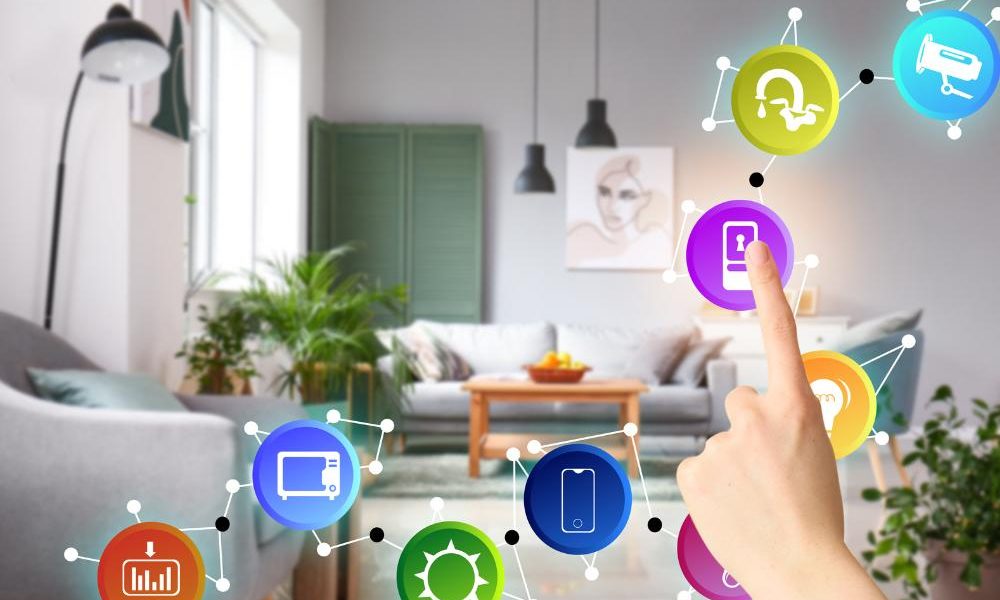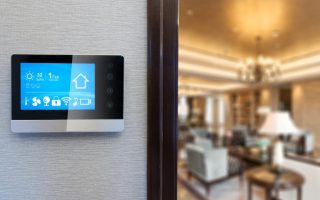Turning your house into a smart home doesn’t require hiring a professional. With today’s user-friendly technology, you can automate various aspects of your home on your own. This guide will help you navigate the world of DIY smart home projects, providing practical tips, personal anecdotes, and expert insights to ensure your home is as efficient and convenient as possible.
Why Choose DIY Smart Home Automation?
There are several compelling reasons to opt for DIY smart home projects:
Cost Savings
By doing it yourself, you can save on labor costs and allocate your budget towards higher-quality devices. According to Stacey Higginbotham, a technology journalist and smart home expert, “DIY smart home projects can be a fun and rewarding way to personalize your space, learn new skills, and save money” (Source: Stacey on IoT Podcast).
Customization and Flexibility
DIY projects allow you to customize your home automation setup to suit your specific needs and preferences. Dave Johnson, a tech journalist, points out, “There are many benefits to creating a DIY smart home, including customization, flexibility, and cost savings” (Source: Business Insider).
Learning and Empowerment
Engaging in DIY projects empowers you with the knowledge and skills to troubleshoot and expand your smart home system independently. This can be particularly rewarding and boost your confidence in managing your home’s technology.
Getting Started: Basic Principles
1. Start Small
Molly Price, a smart home expert, advises, “Start small with your DIY smart home projects. Choose a few simple devices that you’ll actually use, and gradually add more as you become comfortable with the technology” (Source: The Wirecutter). Begin with basic devices such as smart plugs, smart bulbs, or a smart thermostat.
2. Choose a Hub
A smart hub acts as the control center for your devices, allowing them to communicate with each other. Popular options include Amazon Echo, Google Home, and Samsung SmartThings. Selecting a hub that supports a wide range of devices ensures future scalability.
3. Consider Compatibility
Ensure that the devices you choose are compatible with your hub and other smart home devices. This will prevent integration issues and streamline your setup process.
Essential DIY Smart Home Devices
Smart Plugs
Smart plugs are an excellent entry point for DIY smart home enthusiasts. They allow you to control appliances remotely, set schedules, and monitor energy usage. For instance, I started my smart home journey with smart plugs to automate my coffee maker and lamps, making my mornings smoother.
Smart Bulbs
Smart bulbs offer convenience and energy efficiency. You can control them via your smartphone or voice assistant, set timers, and adjust brightness and color. Ry Crist, a smart home reviewer, states, “The best DIY smart home projects are the ones that solve real problems and make your life easier” (Source: CNET Smart Home).
Smart Thermostats
Smart thermostats, such as the Nest Learning Thermostat, learn your schedule and preferences to optimize heating and cooling, potentially lowering your energy bills. A study by Energies found significant energy savings with the use of DIY smart home systems like smart thermostats and lighting controls (Source: Energies).
Smart Security Cameras
Installing smart security cameras enhances your home’s security by allowing you to monitor your property remotely. Look for cameras with features like motion detection, night vision, and two-way audio.
Smart Locks
Smart locks offer keyless entry and remote access, increasing your home’s security and convenience. You can grant access to guests or service providers without needing physical keys.
DIY Smart Home Projects
1. Automate Your Lighting
Automating your home’s lighting can improve convenience and save energy. Install smart bulbs or switches and use your hub’s app to set schedules, group lights by room, and create scenes for different activities (e.g., movie night, dinner).
I installed smart bulbs in my living room and set them to gradually brighten in the morning and dim in the evening. This has significantly improved my sleep routine and overall mood.
2. Create a Smart Security System
Combine smart security cameras, doorbell cameras, and smart locks to create a comprehensive DIY security system. Ensure that your devices are compatible and can be controlled from a single app.
3. Set Up a Smart Home Theater
Enhance your entertainment experience by integrating smart speakers, smart TVs, and universal remotes. Use voice commands to control your devices, create custom scenes, and enjoy a seamless viewing experience.
4. Automate Your HVAC System
Install a smart thermostat and connect it to your HVAC system. Program the thermostat to adjust the temperature based on your schedule and preferences, reducing energy consumption and maintaining comfort.
5. Integrate Smart Appliances
Upgrade your kitchen with smart appliances such as smart refrigerators, ovens, and coffee makers. These appliances can be controlled remotely, offer notifications, and even suggest recipes based on available ingredients.
Overcoming Common Challenges
Compatibility Issues
One of the biggest challenges in setting up a smart home is ensuring that all devices work together seamlessly. Avi Greengart, President and Lead Analyst at Techsponential, highlights, “The biggest challenge for smart homes is interoperability. There are too many different platforms and standards, which can make it difficult to get all your devices to work together seamlessly” (Source: Techsponential).
Solution: Stick to devices from the same brand or those that support common standards like Zigbee or Z-Wave. Regularly update your devices to ensure compatibility with new integrations.
Security Concerns
Smart home devices are vulnerable to hacking and privacy breaches. A study by the Pew Research Center emphasizes the importance of addressing these concerns (Source: Pew Research Center).
Solution: Use strong, unique passwords for your devices and home network. Enable two-factor authentication and regularly update your device firmware to protect against vulnerabilities.
Technical Difficulties
Setting up smart home devices can be technically challenging, especially for beginners.
Solution: Read user manuals thoroughly, watch tutorial videos, and don’t hesitate to seek help from online forums or customer support. Starting with simpler devices can also help build your confidence.
DIY Smart Home on a Budget
1. Look for Deals and Discounts
Keep an eye out for sales events like Black Friday, Cyber Monday, and Amazon Prime Day. These events often feature significant discounts on smart home devices.
2. Use Price Comparison Tools
Websites and apps like Honey, PriceGrabber, and CamelCamelCamel can help you find the best deals and track price changes over time.
3. Buy Refurbished or Second-Hand Devices
Consider purchasing refurbished or gently used devices from reputable sellers. This can save you money while still providing reliable performance.
4. Take Advantage of Bundles
Many retailers offer bundles that include multiple smart home devices at a discounted price. This can be a cost-effective way to expand your smart home setup.
5. Start Small and Build Gradually
As Molly Price suggests, “Start small with your DIY smart home projects. Choose a few simple devices that you’ll actually use, and gradually add more as you become comfortable with the technology” (Source: The Wirecutter).
The Fun of DIY Smart Home Projects
Creating a smart home isn’t just about convenience and efficiency; it’s also about having fun and experimenting with new technology. Brian X. Chen, a technology columnist for The New York Times, encourages, “The most important thing is to have fun with your DIY smart home. Experiment with different gadgets and hacks to see what works best for you” (Source: The New York Times).
One of my favorite DIY projects was setting up a smart home theater system. I integrated my smart TV, speakers, and lighting to create a fully immersive viewing experience. The process was not only rewarding but also significantly enhanced my movie nights.
Conclusion
Automating your home with DIY smart home projects is a practical and enjoyable way to enhance your living space. By starting small, choosing compatible devices, and prioritizing security, you can create a smart home that suits your needs and budget.
Whether you’re looking to improve convenience, save energy, or enhance security, the world of smart home technology offers endless possibilities. With a little patience and creativity, you can transform your home into a smart, efficient, and comfortable haven.
So, roll up your sleeves, explore the latest gadgets, and start building your smart home today. Remember, the journey is just as rewarding as the destination, and with each new device you add, you’ll gain valuable skills and insights into the exciting world of home automation.




